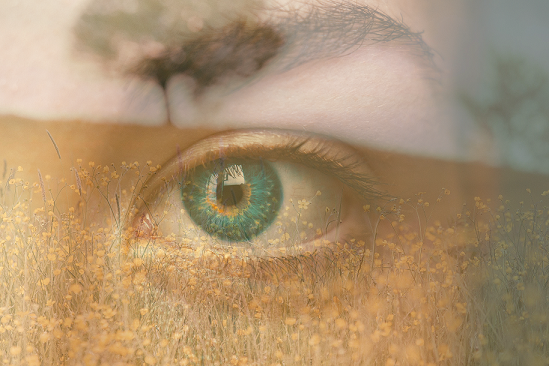How to understand stories of change and tell your own.
Are we right now telling a single story of climate change?
Who is doing it differently and how can we tell a better story for social change? And where does journalism come in?
Beginning of February in a village of Czech Republic. The world was covered in snow for a change. An international group of young people came together. Together they asked big questions, told stories, discussed, tried out, became friends. They talked about stories and how they are built, shared them in a circle or went on an Earth Walk to recount and experience the story of the universe through 14 billion years.
This was the Storytelling for Global Change course organized by the association Vice Versa in Czech Republic in the ecological center in Slunakov, near Olomouc. It sparked a period of research on the topics around storytelling and inspired this text. I set out to look for answers to above questions.
Everyone is a storyteller. The whole reality we construct for ourselves is made of stories. It’s up to us to recognize their power and use it consciously. Even on social media we are storytellers, because though hitting the share button on social media isn’t exactly what will change the world it still carries a responsibility for the story that we thus spread.
Let’s get on the journey.

The book that changed the environmental movement
Rachel Carson published the world-famous book Silent Spring in 1962. She was a scientist and writer, starting with creating lyrical journeys to the seas based on her oceanographic research. The book, showing the destructive effects of pesticides like DDT on natural ecosystems, “adrenalized a new public awareness of the fragile interconnectedness of this living world.” Silent Spring is a non-fiction book, but begins with a fable and is filled with poetic language. It rippled across public policy and the population’s imagination, inspired generations of activists and lead to the creation of the Environmental Protection Agency in the USA. This phrase hits the point: “Journalists are the story-breakers whose work often changes the belief systems that then drive legislative and institutional change.”
As we know from fairy tales and myths, names have power and calling something by its name, naming wrongs and corruption are the first step to change the status quo. This article about the words of Rebecca Solnit, author and poetic public defender of democracy has more on changing the story to change the world.
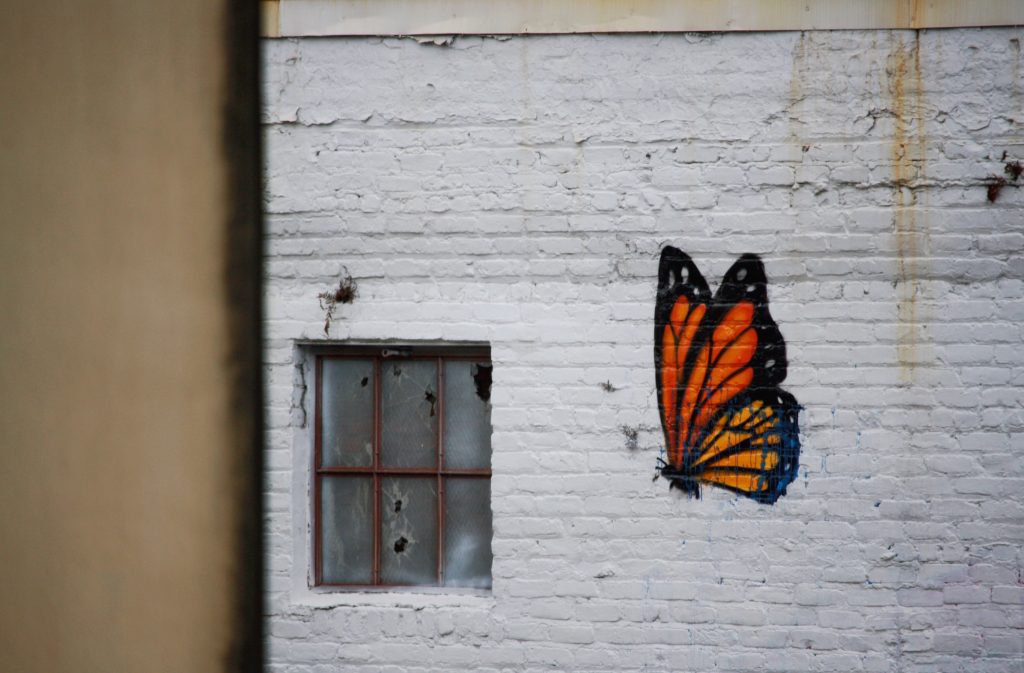
“The dominant culture mostly goes about reinforcing the stories that are the pillars propping it up and that, too often, are also the bars of someone else’s cage. They are too often stories that should be broken, or are already broken and ruined and ruinous and way past their expiration date. They sit atop mountains of unexamined assumptions.” Solnit
Elizabeth Kolbert is one of the journalists on climate change of our time and authors of books like The Sixth Extinction: An Unnatural History. In her own words, what she’s trying to achieve with her non-fictional work: “I’m basically trying to tilt your worldview a little bit.”
So, did Silent Spring matter and help to at least kickstart solving the problems it portrayed? It did and is considered one of the great works of American literature. But not every book on environment and global change will change the world or is written in a way to reach whom it wants to reach. Elizabeth Kolbert doesn’t “nurse any illusions that what I write might factor into any decisions.“
What is a story?
Forget about definitions (there is no single one). All that matters for the start is this: A story has structure. A beginning, a middle and an end. We also call this a narrative arc. It also has characters and context. In Trump’s story Make America Great Again the characters are We, the Americans in the context of the USA. The arc goes like this: We were a great country, now we are weak, let’s be great again.
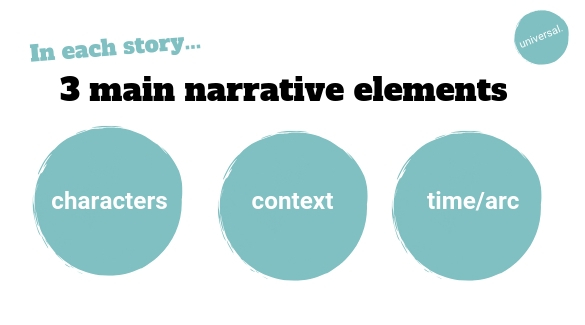
The danger of a single story
Nigerian-born author Chimamanda Ngozi Adichie first mentioned the concept of a “single story” – the tendency to uncritically embrace received wisdom referring to social and ethnic narratives – in a TED talk. While there’s no single definition for narrative, it usually provides a storyline for communicating why an issue might be a problem, who or what might be responsible for it, what should be done about it, and the ‘moral responsibilities’ of various actors. Sometimes story and narrative are used interchangeable; a narrative is just a big story.
Chimamanda talked about the single story of Africa, a story of catastrophe, that left no possibility of feelings more complex than pity and no possibility of a connexion as human equals. Then she went on to show other stories of Africa. She also told the story of a woman, a woman who is viewed as someone not supposed to read like most lower-middle class Nigerians. A woman who read Chimamanda’s first novel and told the author how it should have ended in her mind – she took ownership of the book, of the story.
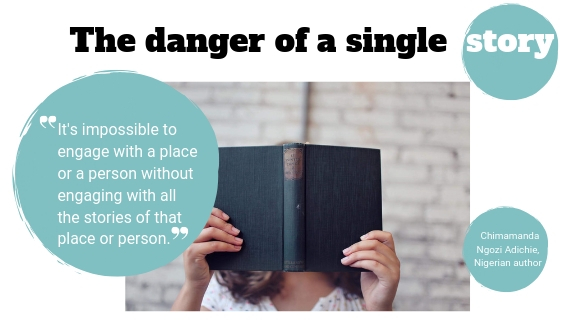
So, how does climate change come into this?
Just as Judith D. Schwarz writes in this The Guardian article, “by shifting to a more complex, multifaceted story we can envision solutions that better reflect the realities of climate and how the natural world processes heat.” She claims the single story of climate change as the following: Climate change is caused by too much CO2 and we will stop climate change through transitioning away from fossil fuels. “Climate is not a function of one sole metric; it is not a single story.” The water cycle, disrupted among others by land use and altered plant cover, plays a huge role in intensifying effects of climate change. It’s not only climate change having an impact on the availability of water but water having an impact on climate. Here we’re back at the seemingly obvious point that every step towards regeneration of land brings multiple benefits in the cycle of soil organic carbon and water.
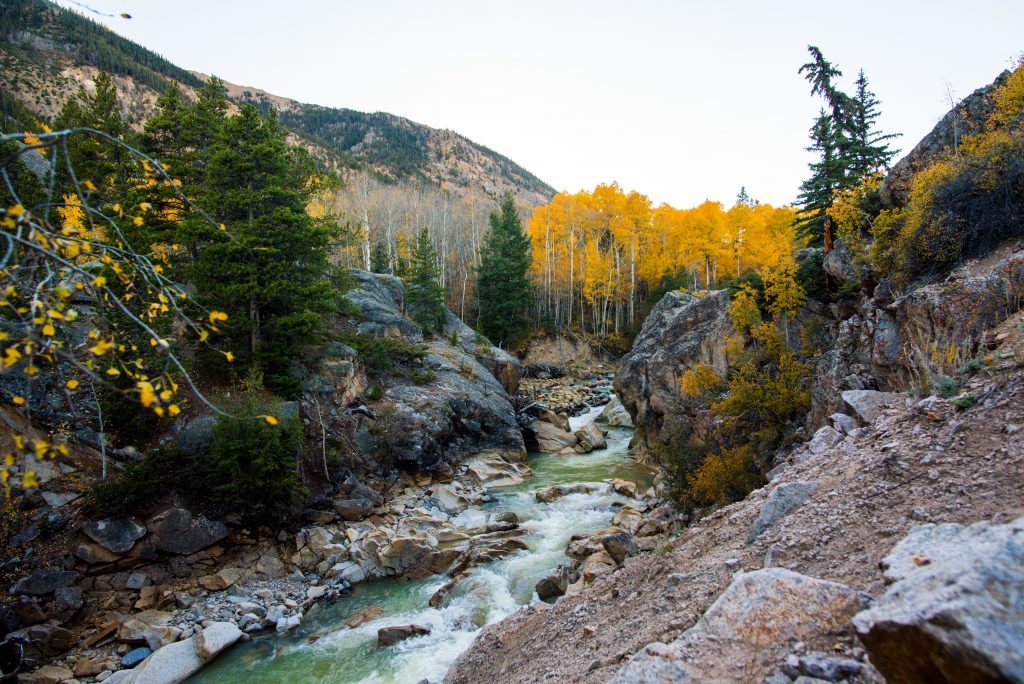
“Let me now introduce an alternate definition of climate change: “manifestations of distorted carbon, water and energy cycles”. That doesn’t negate the single story of fossil fuel-borne carbon but broadens it in a way that creates opportunities beyond fighting fossil fuel interests. At this moment of reckless distraction and denial, it is crucial to find meaningful paths forward.”
->Charles Eisenstein, writer and author of the book Climate: A New Story (2018) echoes that view, namely of too much emphasis on fuels and emissions and not enough on ecosystems, biodiversity, water, soil, forests, wetlands. “Even if we cut emissions to zero overnight, if we continue to degrade the biosphere the planet will still die the death of a million cuts.” According to Eisenstein, a polluted river is not seen as the most existential threat in the dominant narrative, because carbon comes first.
A change in the narrative also brings the focus back to a local level, which is more tangible for people. This doesn’t mean restraining our environmental actions to picking up litter, but instead taking into account more than just ourselves in every decision. In this context, the gravity of the weakened environmental compatibility control (UVP) for large infrastructure projects in Austria is even clearer.
->Our current storytelling is what holds our system together and justifies our actions. The single story, the story of a single species. But storytelling can also create another narrative with different values of sharing and nourishment. As a participant of the storytelling course wrote, “perhaps knowing that our beliefs are imagined constructs, liberates us and allows us to actively create our own story. And why not create a life-affirming one – based on love and compassion?”
Chimamanda Ngozi Adichie shows that choosing to start a story at a different point creates a quite different story. “Start the story with the arrows of the Native Americans, and not the arrival of the British, and you have an entirely different story.” And she herself realized that she used to be guilty of believing in a single story of a group of people – in that case of Mexicans as immigrants. What about you?
Climate change has many narratives
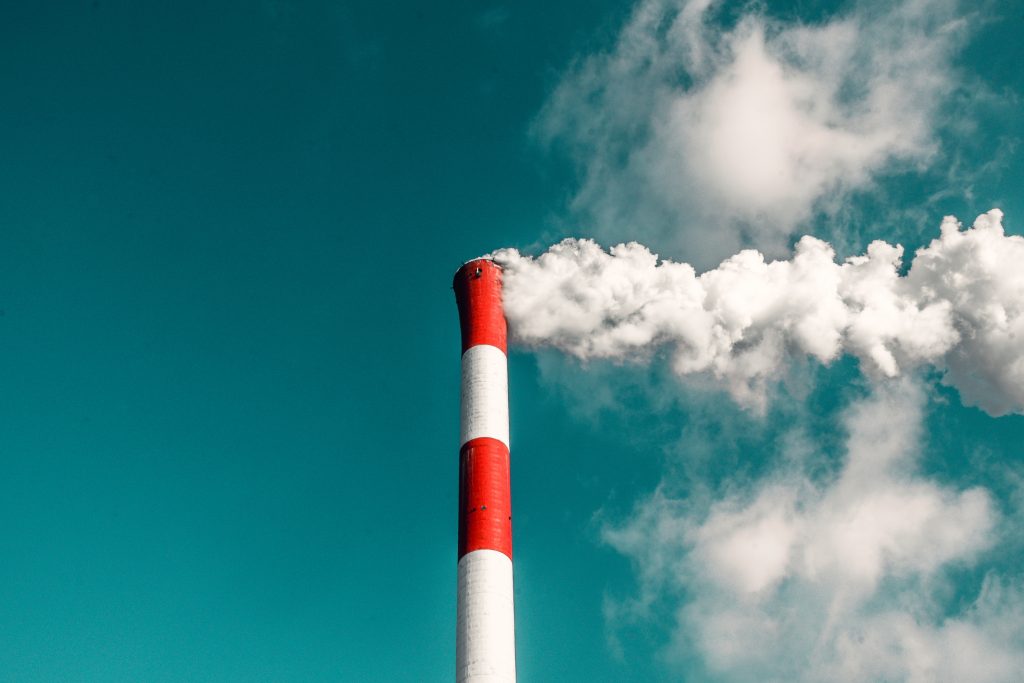
We continue using the images of smoke stacks and polar bears created in the 90’s to talk about climate change
There are different ways to analyse what kind of climate change stories are right now dominating. A simple but convincing view from a project of a professor of environmental studies at the Trudeau Foundation: its two, the first being associated with the doom and gloom narrative using imagery designed to bring home the global crisis that faces us.
Whether historically Rachel Carson, most famously Al Gore with films like An Inconvenient Truth or his talks; or likewise the film Chasing Ice among many others. By the way, Christine Cordero from the Center for Story-Based strategy (more on that soon below) views Al Gore’s film as lacking a narrative or story, while still being a very good synthesis of science at that time. This study on a unifying narrative of climate change argues that this narrative asked „too much, too quickly“ and led to an overemphasis on certainties, a tactic punished in more plural spaces of social media compared to traditional media.
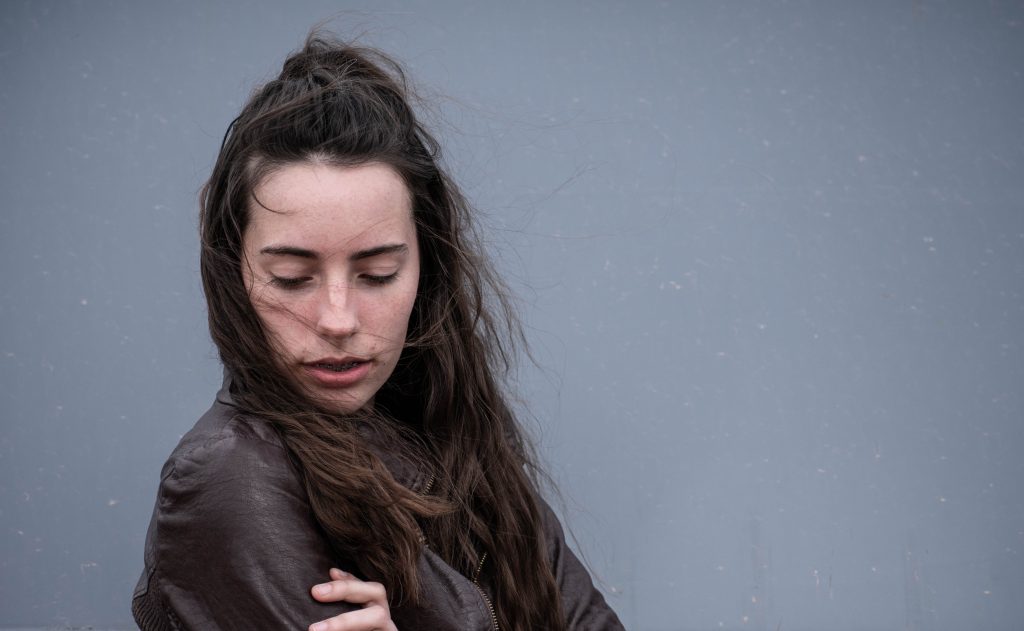
The second one are environmental justice stories that have usually followed the David and Goliath storyline/trajectory – and we know that David wins. An example? This Changes Everything by Canadian author, social activist and filmmaker Naomi Klein. According to the analysis, what is usually missing are stories of coming of age, of personal growth and transformation in climate changing times, focus on humour, interconnection, vulnerability, and resilience of communities, but also sad stories of losses that allow for mourning. Maybe to inspire radical change we really need the powerful moment of walking through the wound, and not around it, stopping to feel the sadness and loss from environmental degradation around us instead of escaping to solutioneering.
Another way to put it that lacks the environmental justice narrative is the division in it’s not happening, meaning human-caused climate change in the present scale, and we suck narrative. The latter is a morality tale reminding of ancient flood myths and has been shown not to work.
This study identifies three key narratives: dangerous climate change, common but differentiated responsibility and carbon trading. The author argues that the images used in the first one are mostly biophysical, with human systems relatively unexplored and not enough nuanced analysis of the distribution of risks and the capacity to adapt to them locally. The key international narrative of striving to prevent dangerous anthropogenic influence on the climate system demands results from science on the links between emissions – concentrations – climate & climate change impacts that it cannot deliver worldwide. The common but differentiated responsibility narrative is criticized for – among others – lacking a differentiation between survival and luxury emissions and not taking into account the efficiency of energy use.
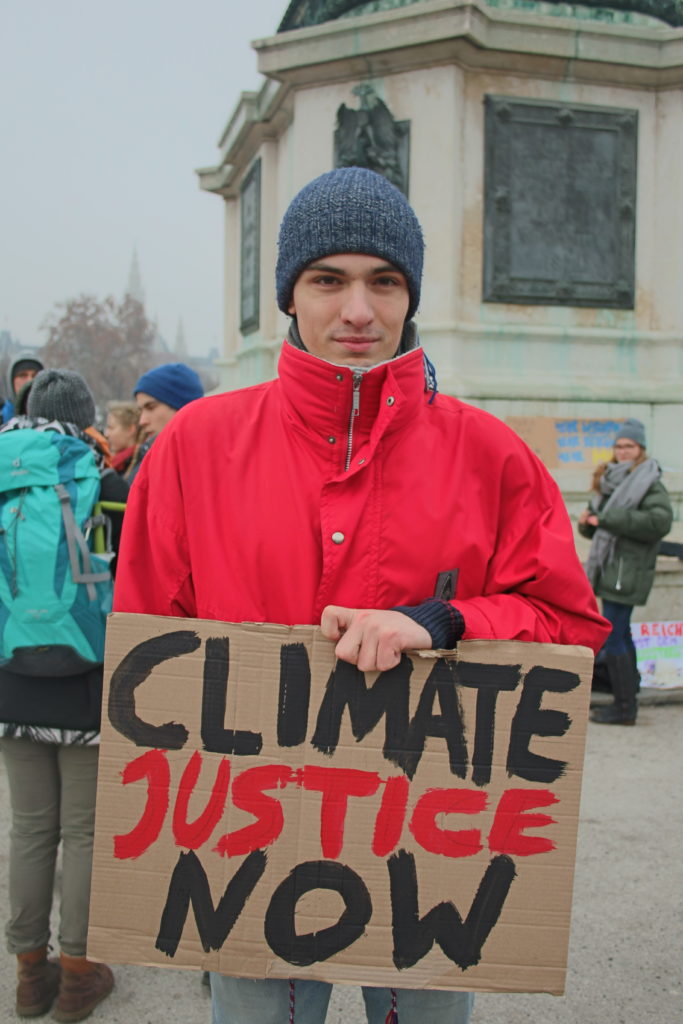
And some researchers even worked to identify narratives present at the Paris climate conference, namely , the ‘official optimist narrative; the ‘protestor narrative’; the ‘North vs. South narrative’; the ‘denier narrative’; the ‘doomsday narrative’ and the ‘’hard change’ narrative’ in addition to the general above ones.
“A lot of the time what we see are people pushing the science and policy without any kind of narrative. Which is why most people seem pretty disconnected, even when the impacts are so day to day.” – Christine Cordero
U.S.-American physicist and writer Adam Frank goes on to say that after the myths of religion in the past centuries, today the creation of these big stories falls to science. He argues that one of the reasons we have been failing to act on climate change is that “we haven’t yet translated that data into a “big story,” a new mythic level narrative about human beings and our place in Earth’s 4-billion-year history of life and the planet co-evolving”. That we have have failed to understand the power of myth. So what is a myth exactly? Joseph Campbell, professor of literature who was known for his work on comparative mythology discovered that humans have been essentially telling a variation of the same story since they learned to write – a hero’s story or journey. He also called it monomyth or universal story, universal in the elements it is built on regardless of the culture every single one of the stories stemmed from. The vast majority of Hollywood movies represent a hero’s journey.
The hero’s journey
In this kind of story, the hero ventures out on an adventure to perform heroic acts in a supernatural world to then return and bring something back to the ordinary world. On the way, he finds a mentor and faces challenges. And he finds friends, because nobody can be a hero alone. Above all, the hero returns into ordinary life but as a changed person.

The group notes from the storytelling course remind me the whole journey only gains real meaning when brought back into everyday life, doing the hard work in reality. In the Lord of the Rings, Frodo and Sam are both heroes of the story, but Frodo returns so changed from the journey that he leaves the familiar Shire right after the return to seek a new life. The notes also remind of someone I met there: Anna Książek from Exchange the World, who has been travelling the world to collect the stories of changemakers. In this free book she collects some of them along with educational materials for kids to become changemakers.
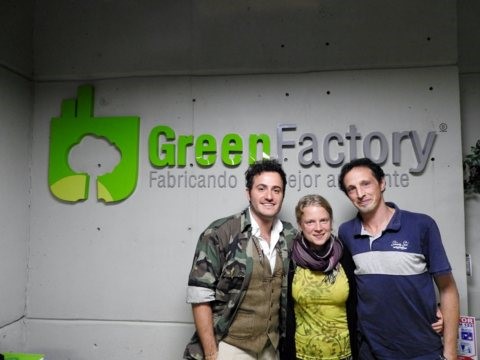
Visiting the Green Factory in Colombia. They are trying to transform the built environment through sustainable construction.
An example of a hero story in our context? It’s any story around a proposal of one technology or a combination of them – like the goal of making all new homes carbon-zero. It’s basically telling the story that we will be saved by clever technologies. Often, the hero is simply renewable energy. It’s a positive, familiar and often-used story, and it’s opposed to the learning story. In the latter things are less simple and the protagonists are normal people who need to rise to a challenge. This story “asks for participation and reflection”.
Charles Eisenstein has spoken critically of the hero’s journey because „we’ve made everything about the hero’s journey…as if that is the roadmap for life.“ He argues that humanity was in a hero’s journey against nature itself for millennia in conquering the wild and pushing the boundaries of civilization; this struggle has thus defined human history. Even worse, popular narratives have focused on the period of struggle from the whole journey. We have now completed this archetype of a hero on a collective level and maybe need to move to a different story in this necessary new phase of unlearning and humbling. The old story has supported our thinking that if you kill the evil – the drug lord, Saddam Hussein, the „bad guy“- everything will be fine.
Our pop culture has been shaped by many films celebrating the struggle of good against evil, with the evil being something that can only be destroyed. But there are different stories, like the animated films Moana and Kiriku.
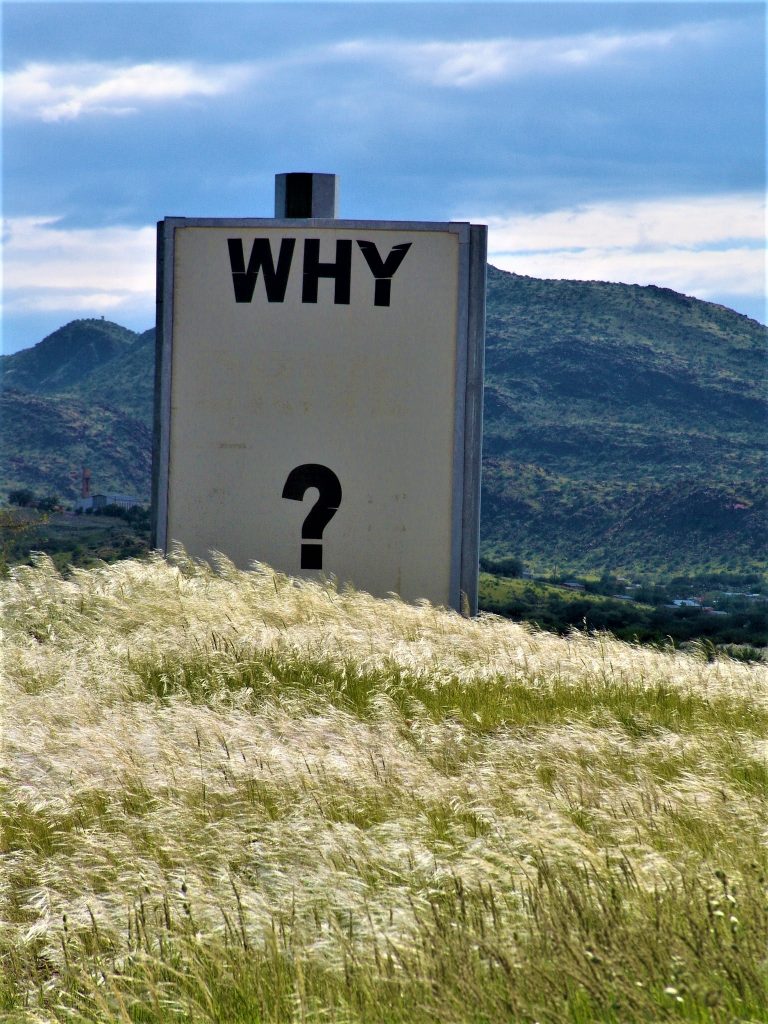
So, can we grow as a culture and stop being superheroes and supervillains? When watching Star Wars with our children or friends can we please ask: Why do you think Darth Vader is so mean?
In my personal take on this, we have to give up the hero’s story on a societal level, but we don’t need to stop telling hero’s stories. We can rethink what a hero story can be and this is already happening, with new ways of telling it rather than the typical boy as a hero, adolescent type. And we can give back some of the space to a different kind of story.
About the hero biofuel, learning stories and villains
In hero stories of energy transitions, the supernatural world is the future or imaginary world of technical potential. The problem with this story is that its hero are technologies instead of the people providing them and there is no enemy present in the narrative arc to battle but us. I used the word battle subconsciously, but while this is at least implicitly part of many stories, authors like Charles Eisenstein and Susan Sontag argue that we need to notice where we use battle and war metaphors and replace them with other expressions; because the “fight” on climate change isn’t working with pointing of blame and declarations of climate emergency, and we can’t restructure our society without restructuring our language. Feelings and points can drive better conversations.
One of the many concrete hero stories used in sustainability right now is that of the ethanol sector in Brazil. There the sugarcane industry strategically utilized the storytelling approach to communicate its “value creation”. It created a shared storyline that “evokes a common vision of the future, sketches the journey to achieve that vision, [and] identifies critical milestones along the way.” They did it through three types of stories: hero, learning and horror.
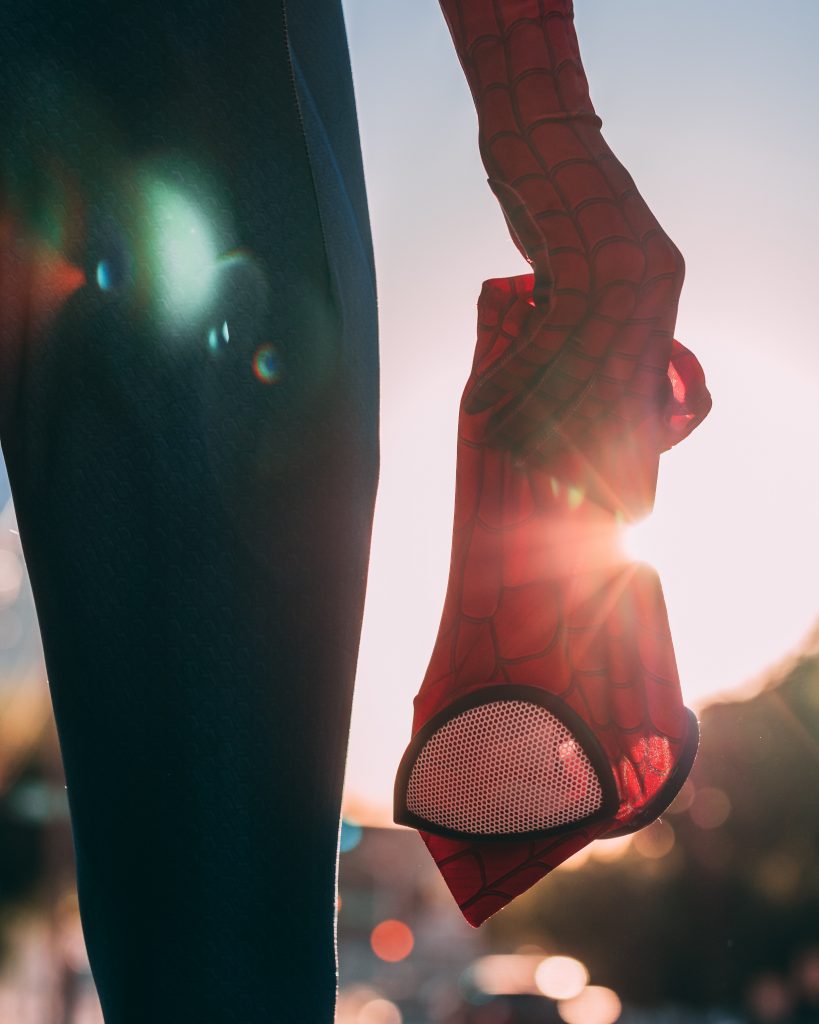
The hero story celebrates the technology as sustainable biofuel that reduces greenhouse gas emissions, the learning story associates ethanol with other sustainable attitudes, such as planting trees, waste recycling and moving away from pre-harvest burning. People are asked to participate in the task to save the planet by using ethanol and changing their consumer habits. The villain of the horror story is the U.S. congress with its protectionism and lobby-practices.
In another example, former UK Labour leader introduced a horror story to freeze energy prices against the villain of predatory big energy companies. When he later pledged to take out all the carbon from the energy system by 2030 no- one listened. “Compelling narratives demand attention and, as he found, the enemy narrative he introduced framed and dominated all subsequent discussion”. This is why enemy narratives may not work anymore and we should instead communicate co-operation, since we are all responsible. The antagonist in a hero story is different. Often, the enemy can be one’s own temptations and challenges.
A simple comparison of a hero and a learning story: in a EU-project called Retrofit for the Future to reduce carbon emissions from buildings the hero story portrayed the improvements in environmental performance and housing comfort as bigger than they actually were and masked out things that weren’t working in the refurbished buildings. In another EU-project to support the development of renewable energy and energy efficiency on a community level across 23 countries, the underlying assumption was that technological change leads to economic and social benefits. Underlying assumptions are unconscious thoughts, beliefs, perceptions, and feelings that are not discussed but influence actions. A set of indicators was developed to prove those benefits. From a learning story perspective these indicators didn’t fit well with the project achievements, making project partners feel down.
To end this part, a good hero story always includes an inner learning story and we need to see more of learning stories (not only in the building sector). Especially in long-tern infrastructure projects like renewables, the hero story of the new technology only lasts at the beginning. Allowing for learning stories, which refer to sub-optimal results without fear, can help to move forward together and not frame the story as a failure if something didn’t work out as imagined at the start. When we tell a hero story we can be conscious of telling the whole circle of the hero journey to shape a more powerful story.
Heroes for a better tomorrow – is this going to be enough?
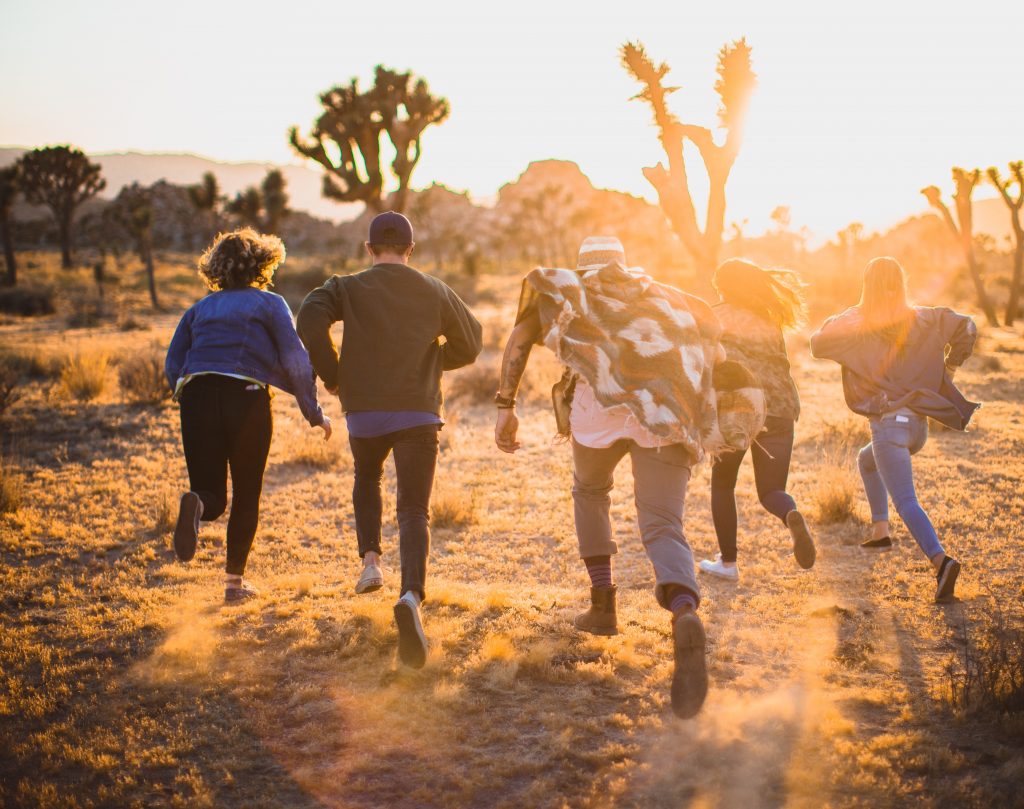
-> The world-famous film Tomorrow (Demain) highlights positive and personal stories towards a sustainable world. Instead of showing images of an ending world or analysing and deconstructing the problem it shows people taking small steps to solve the problem from the start. The presskit has some background stories on the film. Mohammad Yunnus, one of the founders of microfinance, talks of the need to replace the – consumerist and materialistic – dream of our parents with the dream of our children. The road movie is basically a search for a new story for our societies, in their own words “raising the questions everyone is asking”. And this is why the story works:
“In each chapter (based on a theme), an expert will provide a storyline about what the agriculture (for example) or the energy of tomorrow might be. Then we will follow one of the main characters, who will serve as the guiding thread as we learn how men and women have taken control of their destiny, their land and given rise to small, coherent societies. The characters will be filmed on location, in action in their environment, in order to clearly convey their way of life. The aim is to build stories that harmonize and to show that each small story contributes to building the big story, that the local is connected to the global.” Importantly, the film shows the converge of all those local ideas through the way it’s edited.
The documentary highlights a model public school in Finland; a citywide composting project in San Francisco, a town in England that prints its own money, an envelope factory in Lille which reinvests its profits rather than paying shareholders, Iceland’s pioneering response to political breakdown and more.

->The short film Climate Heroes: Stories of Change (2014) of the initiative Momentum for Change of the UNFCCC secretariat shows 9 stories on how “action on climate change is creating jobs, improving lives and turning dreams of a better future into reality.” The hero stories include the social enterprise Pollinate Energy providing clean electricity to the poorest in Bangalore, India, the Australian initiative 1 million women driving sustainable change through involving as many women as possible and Ghana bamboo bicycles. The message of the film is that green entrepreneurship is key to shifting to green economy. While it says to connect the stories shown, it seemed quite fragmented and superficial in its narrative.
->The website Climate Heroes, established 2010, likewise presents the hero stories of people fighting climate change. And there’s much more; the website Climate Visuals by Climate Outreach with pictures and stories on climate impacts and solutions, the Global Climate Narratives Project by Climate Outreach again or single examples like that on hurricane Sandy in the U.S. or stories of change in Dresden like anti-consumerist city tours and organic grocery shops as a place for exchange and education.
No, it is not going to be enough because a story will never change the world by itself. It’s a start and it’s necessary.
Carl Sagan, U.S.-American astronomer, author, science popularizer and more once held an iconic short lecture based on the seminal photograph of Earth taken by the Voyager 1 spacecraft in 1990. Here science and spirituality, insignificance and responsibility meet.
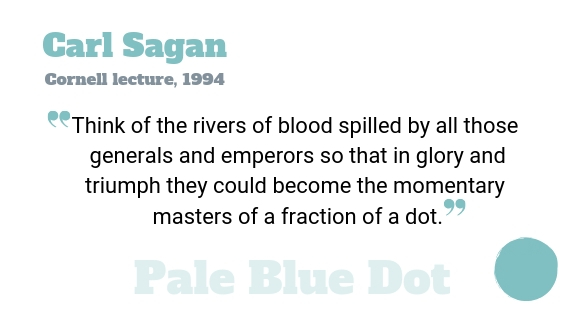
Continue to PART 2 about how to know where to intervene on a problem, tell a story of change & start a climate conversation
(c) cover photo: Amanda Dalbjorn, Silvetri Matteo on Unsplash (overlap of the two pictures)
(c) all the graphics: klimareporter.in

